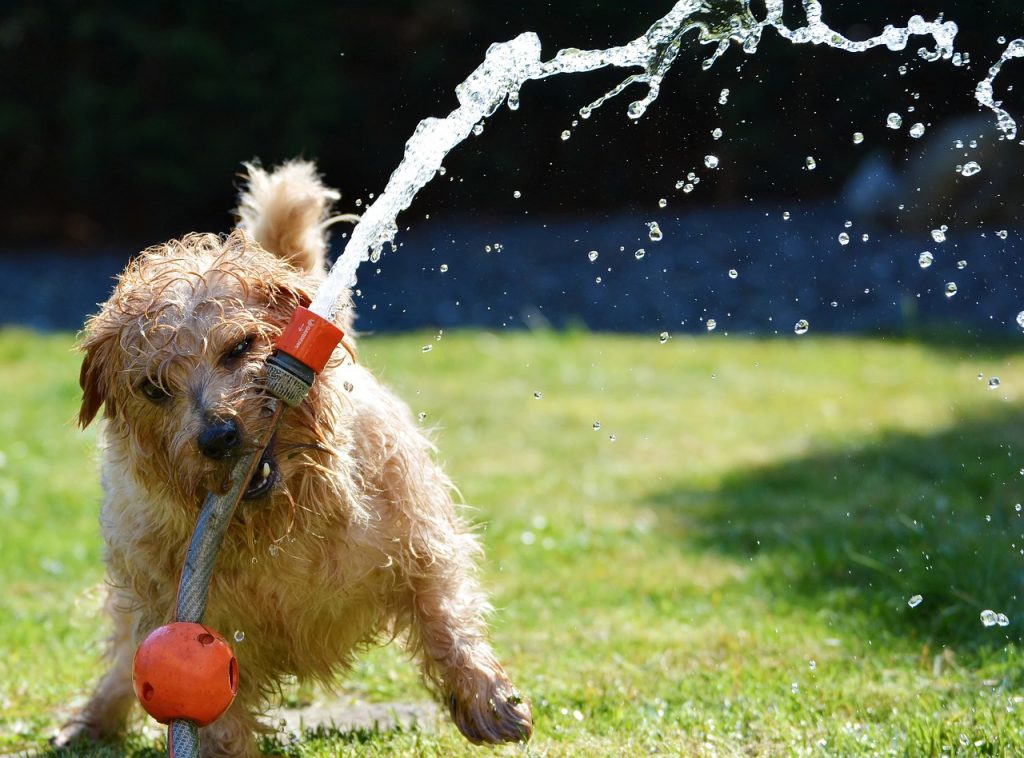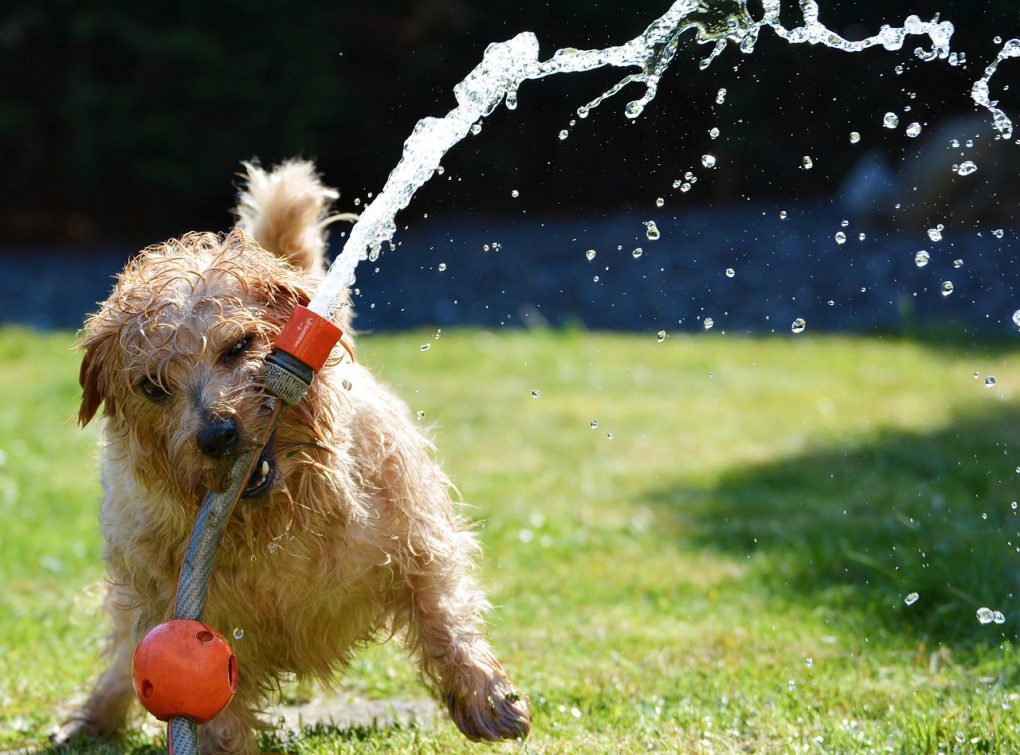Dos and Don’ts for Creating a Dog-Friendly Garden

There you are. Wanting to create a beautiful blooming garden to enjoy — one that shows off your home and takes your yard to the next level, but one that’s also safe for your romping pup. It’s certainly more than possible to put together a gorgeous landscape that’s not only safe for Fido and company, but also safe from any potential destruction. Check out these tips for what to do when approaching your garden plan, and what to absolutely steer clear from, thanks to a little inspiration from the dog-care pros over at Rover.com.
A few safe blooms:
There are more options, but here are some popular ones we like.
Zinnias, African Violets, Hibiscus, Blue-Eyed Daisies (for the pop-of-color-conscious)
Sage, thyme, and cilantro (for the culinary-minded)
Purple passion vine, spider ivy (for the lengthy-plant lovers)
Wheatgrass, artemesia, and tansy (to keep fleas at bay)
Keep your pup’s chompers (and maybe your garden altogether) away from:
Lilies: especially if you have outdoor cats. These lovely-but-toxic blooms cause shutdown of the kidneys and even death if not treated quickly enough. Signs include vomiting, lethargy, and disinterest in eating.
Tulips: culprit of GI irritation, cardiac issues, and even convulsions when consumed.
Hyacinth: known to cause tremors as well as irritation of the mouth and esophagus.
Vines: bad news for the four-legged set. Keep the toxic Clematis, English and Boston Ivy, Morning Glory, and Wisteria out of your garden if your pup has a penchant for plant-tasting.
Caladium: their sneakily-harmful leaves contain crystals that irritate the skin and mouth and may lead to your pup having difficulty walking and breathing.
Of course, this list is not exhaustive. Check out the American Society for the Prevention of Cruelty to Animals’ full list of plants that are poisonous when consumed by sneaky little yard-snackers.
A landscape designed to prevent plant damage — and injury to four-legged friends.
From digging to running to rolling around, there’s no end to the havoc a pup can wreak on a yard (and really, with the sheer joy on their faces and the happily-wagging tongue, who would want them to stop?). Here are a few smart ways to minimize the damage wrought on your lovingly-planted blooms, vines, and other greenery.
- Lay down stones to prevent digging.
- Create a patch of sand with buried toys that will safely preoccupy your pup. They’ll forget all about the intriguing exotic plants when their favorite ball is tangibly within a delightfully-diggable sandy area.
- Keep hedges trimmed and thorn-free to prevent painful lodging in little paws.
- Be careful with synthetic lawns, especially if you live in an area that sees frequently high temperatures. They hold heat, which can be harmful to dogs’ sensitive paws if left outside for long periods of time. Invest in a doghouse and trees in order to provide your pooch with adequate shade.
- For flower beds: create a chicken wire fence around the perimeter of the entire bed to prevent canine entry. For added protection against any puppies playing amongst the growing blooms, plant stakes through the bed so that there’s no room for romping around or lying down.
Written by Casey Dickson, Rover.com community member. Rover is the nation’s largest network of 5-star pet sitters and dog walkers.



